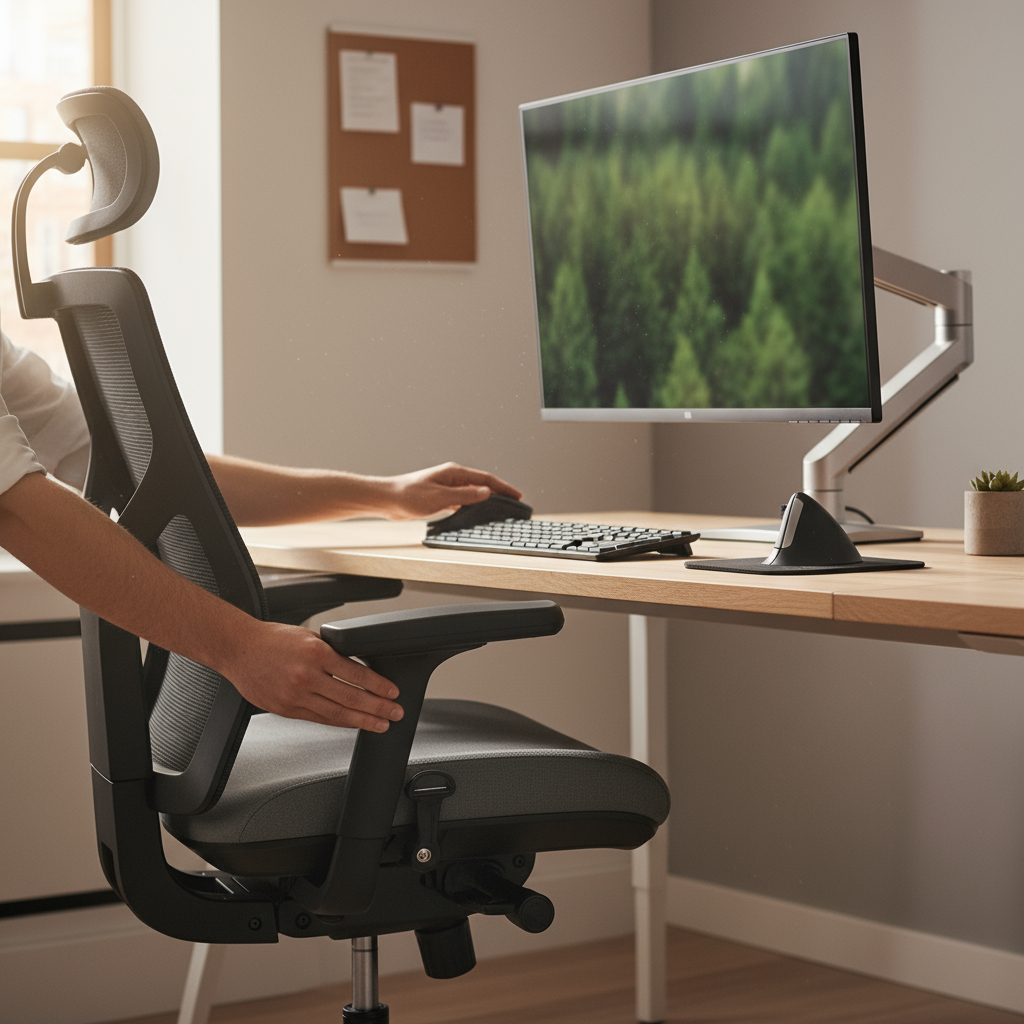
Table of Contents
Introduction
You know that moment when you catch a glimpse of yourself in a store window and think, “When did I start walking like that?” Or maybe you’ve felt that familiar ache creeping up your neck after hours hunched over your laptop. You’re not alone. Poor posture has become something of a modern epidemic, affecting millions of us who spend our days battling gravity (and losing). But here’s the good news—improving your posture isn’t just about standing up straighter. It’s about feeling better, moving with confidence, and preventing those nagging aches that seem to multiply with each passing year.
Now, good posture goes way deeper than your mom telling you to “sit up straight.” When your spine is properly aligned, everything just works better. Your breathing improves, your muscles don’t have to work overtime, and your circulation gets a boost. But what really surprised me when I started digging into this? How much lifestyle factors play into the whole picture. Take stress, for instance—it literally tenses up your muscles and throws off your alignment. That’s why exploring stress reduction methods can be a game-changer for your posture. And those benefits of drinking water? They’re not just about staying hydrated—proper hydration keeps your muscles and joints flexible, making good posture feel effortless instead of forced. Don’t even get me started on sleep. Quality rest (which you can improve with better healthy sleep habits) gives your body the recovery time it needs to rebuild and strengthen your musculoskeletal system.
Here’s something most people miss: your mental state affects how you carry yourself. Ever notice how you slouch when you’re feeling down or stressed? That’s where practices like journaling come in. Learning how to start journaling can boost your self-awareness—including how you hold your body throughout the day. Plus, understanding key mental health awareness facts helps you recognize when emotional factors might be sabotaging your posture goals. The mind-body connection is real, and the best posture improvements happen when you address both sides of the equation.
Of course, we can’t talk about posture without mentioning movement. Your back, shoulders, and core muscles are basically your body’s built-in posture support system—but only if they’re strong enough to do their job. If you’re already dealing with discomfort, targeted exercises to relieve back pain can provide relief while getting you back on track. Want to level up? Activities like cycling offer amazing fitness benefits that build the lung capacity and stamina you need to maintain good posture all day long. And here’s a bonus: exercise doesn’t just strengthen your body—as research shows in mental health and exercise benefits, regular movement reduces stress and improves mood, which circles back to better posture habits.
What You’ll Learn in This Guide
Ready to transform how you stand, sit, and move through the world? Here’s exactly what we’re going to cover together:
- Understanding the Importance of Good Posture: We’ll dive into why proper alignment matters for everything from your energy levels to your confidence. You’ll discover the surprising ways good posture impacts both your physical and emotional well-being.
- Identifying Common Causes of Poor Posture: Time to play detective! We’ll uncover the sneaky lifestyle habits, workplace setups, and daily routines that are sabotaging your alignment—often without you even realizing it.
- Practical Tips to Improve Your Posture: This is where the magic happens. You’ll get actionable strategies for everything from optimizing your workspace to specific exercises and stretches that actually work (no fluff, just results).
- Recognizing When to Seek Professional Help: Sometimes you need backup, and that’s totally okay. We’ll help you spot the warning signs that call for expert intervention and explore your options for professional support.
Think of this guide as your roadmap to standing taller and feeling better in your own skin. We’re not just talking about quick fixes here—we’re building lasting changes that’ll serve you for years to come.
We’ll start by exploring why posture deserves a spot on your priority list (hint: it’s about way more than looking good). Then we’ll shine a light on those everyday posture destroyers that might be flying under your radar. After that, we’ll get our hands dirty with practical strategies you can start implementing today.
Finally, we’ll talk about when it’s time to call in the pros—because knowing when to get help is just as important as knowing how to help yourself. Ready to ditch the slouch and reclaim your confidence? Let’s get started.

Let’s be honest—good posture isn’t just about looking confident (though that’s a nice bonus). Your body alignment actually has a huge impact on how you feel every single day. When everything’s lined up correctly, your muscles, joints, and ligaments aren’t constantly fighting against each other. The result? Less pain, more energy, and way more comfort as you go about your routine. Here’s what’s really cool: once you understand what’s throwing your posture off and learn some simple fixes, you can make changes that genuinely transform how your body feels. We’re going to walk through the biggest culprits behind slouchy posture and give you practical strategies that actually work—so you can move through your day feeling strong and pain-free.
Common Causes of Poor Posture
Here’s the thing about poor posture—it rarely happens overnight. Instead, it’s usually the result of our modern lifestyle habits that slowly but surely throw our bodies out of whack. Think about it: how many hours do you spend hunched over a computer or scrolling through your phone? Most of us are sitting way more than our bodies were designed for, and that creates some serious muscle imbalances. Your hip flexors get tight, your glutes get weak, and before you know it, you’re walking around like a question mark. The tricky part is that we often don’t even realize we’re doing it—these slouchy positions just become our new normal. If you’re looking to create better habits overall (including posture breaks), checking out some time management skills can help you build in those crucial movement moments throughout your busy day.
But it’s not just about sitting too much. Your workspace setup plays a massive role too. Picture this: your monitor’s too low, so you’re constantly looking down. Your chair doesn’t support your back, so you’re slumping forward. Your desk is the wrong height, so your shoulders are hunched up around your ears. After eight hours of this? Your body starts adapting to these awkward positions. Then there are all those little habits we don’t think twice about—carrying a heavy bag on the same shoulder every day, always crossing the same leg, or spending hours with your neck craned down at your phone (we’ve all been there). Each of these seemingly innocent habits is quietly training your muscles to hold you in ways that throw everything off balance.
Key Aspects of Common Posture Challenges
Let’s break down the main troublemakers when it comes to posture problems and why they mess with your spine:
- Prolonged Sitting and Sedentary Lifestyle: Sitting for hours on end is like kryptonite for good posture. Your hip flexors get super tight, your glutes basically go to sleep, and your upper body starts caving in on itself. This muscle imbalance literally pulls your spine out of its happy place, which is why you feel so achy after a long day at your desk.
- Inadequate Workstation Ergonomics: When your desk setup is all wrong—monitor too high, too low, chair that belongs in a torture museum—your body has no choice but to adapt to these uncomfortable positions. You end up with that classic “tech neck” and rounded shoulders that make you look (and feel) like you’re carrying the weight of the world.
- Poor Posture Habits and Awareness: We’re creatures of habit, and unfortunately, many of our habits aren’t doing our posture any favors. Constantly leaning to one side, always carrying weight unevenly, or just spacing out and letting our bodies collapse—these patterns reinforce themselves until they become automatic. The good news? Once you start paying attention, you can begin to change them.
- Muscle Weakness and Imbalances: When your core and back muscles are weak (and let’s face it, sitting all day doesn’t exactly build strength), they can’t do their job of keeping your spine supported. That’s when you start developing issues like excessive curves in your back or that hunched-over look that ages you instantly.
The beauty of understanding these patterns is that knowledge gives you power to change them. Once you recognize what’s happening in your own daily routine, you can start making targeted adjustments that actually stick. It’s not about perfection—it’s about awareness and gradual improvement. Now let’s get into the fun part: what you can actually do about it.
Practical Tips to Improve Your Posture
Ready for some good news? Improving your posture doesn’t require a complete life overhaul. It’s really about making smart tweaks to your environment and building some new habits that support your body instead of working against it. Let’s start with your workspace, since that’s where many of us spend the bulk of our day. Getting your ergonomics right is like giving your posture a fighting chance—adjust that chair so your feet can actually touch the floor, get your monitor at eye level so you’re not constantly looking up or down, and invest in some decent back support. Your future self will thank you. And here’s something interesting: when you reduce physical stress on your body, you often reduce mental stress too. That’s why resources like mental health awareness facts often include tips about creating supportive environments that benefit both your physical and mental well-being.
But workspace fixes are just the beginning. Your body also needs some hands-on attention to undo all that sitting damage. Think of it like this: if you’ve been slouching for years, certain muscles have gotten really tight (hello, chest and hip flexors), while others have gotten weak and lazy (looking at you, core and back muscles). The solution? Stretch what’s tight and strengthen what’s weak. A few minutes of targeted stretching each day can open up your chest and lengthen your spine, while some basic strengthening exercises will give you the muscle power to actually maintain good posture without thinking about it constantly. The real magic happens when you combine these physical changes with simple daily habit shifts—like setting reminders to check your posture or avoiding those positions you know are trouble.
Key Aspects of Improving Posture
Here’s your action plan for building better posture habits that actually work:
- Workplace Ergonomics: Set up your workspace like you actually care about your body. Feet flat on the floor, knees roughly level with your hips, and that monitor straight ahead at eye level—no more looking up or down like a confused giraffe. If your chair feels like it was designed by someone who hates backs, get a lumbar support cushion or just bite the bullet and invest in proper seating.
- Exercise and Stretching: Target the problem areas with stretches that open up your chest, extend your thoracic spine, and release those tight hip flexors that are pulling you forward. Then flip the script with strengthening exercises—planks for your core, rows for your back, and shoulder blade squeezes to fight that rounded shoulder look. Think of it as undoing the damage while building armor against future problems.
- Daily Habits to Change: Stop crossing your legs for hours (your hip alignment will thank you), quit carrying everything on your dominant side like a pack mule, and set up some kind of reminder system to check in with your posture throughout the day. Whether it’s phone alerts or a posture-tracking device, find what works to keep you honest.
- Mindful Movement: Slow down and pay attention to how you move through space. When you sit down, stand up, or walk across a room, do it with intention rather than just flopping around. Practices like yoga or Pilates are gold for this because they teach you to really tune into your body alignment and build that mind-body connection.
Here’s the truth: building better posture is a marathon, not a sprint. Your body has been learning these patterns for years, so give it time to learn new ones. But when you stick with it? The payoff goes way beyond just standing straighter. You’ll have more energy, less pain, and honestly, you’ll just feel more confident moving through the world. And that’s pretty powerful stuff.

Here’s the thing about posture—it’s not just about looking taller or more confident (though that’s a nice bonus). It’s really about bringing your body back into balance and feeling better in your own skin. We’ve covered a lot of ground together, from how our desk jobs and Netflix binges mess with our alignment to why certain muscles get weak while others get crazy tight. But what I hope you’ve picked up on is this: good posture isn’t just about pulling your shoulders back. It’s connected to everything—your stress levels, how much water you drink, even how well you sleep.
Now you’ve got the inside scoop on what’s actually causing your posture problems and, more importantly, what you can do about it. Setting up your workspace properly, doing those targeted exercises (yes, even the ones that feel awkward at first), and building in those little reminder habits—that’s your toolkit right there. Just remember: your body didn’t develop these patterns overnight, so give yourself some grace as you work to change them. Small, consistent changes? That’s where the magic happens. And trust me, the benefits go way beyond just standing straighter—you’ll feel more energetic, less achy, and honestly, just more like yourself.
Ready to put this into action? Start with something practical: work on your time management skills to carve out those crucial posture breaks throughout your day. (Your back will thank you for not sitting for three hours straight.) And don’t underestimate the power of staying hydrated—check out the benefits of drinking water for keeping your muscles happy and flexible. Here’s something people don’t always connect: stress wreaks havoc on posture too. That’s why understanding mental health awareness facts can be a game-changer for your overall approach. Because when your mind feels better, your body follows suit.
Look, changing posture habits isn’t just about avoiding back pain (though that’s pretty great). It’s about reclaiming how you move through the world. Every small adjustment you make is building toward something bigger—less discomfort, more confidence, and honestly, just feeling more comfortable in your own body. You’ve got the knowledge now. You’ve got the tools. What you need next is patience with yourself and consistency with the process. Celebrate the small wins along the way—they add up faster than you think.
Frequently Asked Questions
-
What are simple exercises to improve posture?
- Simple exercises include chest openers, shoulder blade squeezes, planks for core strength, and stretches that target tight hip flexors. These help correct muscle imbalances and support proper alignment.
-
How long does it take to see posture improvement?
- Posture improvements vary depending on consistency and individual factors, but many people notice positive changes within a few weeks to a couple of months of regular practice and awareness.
-
Can poor posture cause pain?
- Yes, poor posture often leads to discomfort or pain in the neck, back, shoulders, and sometimes headaches, due to muscle strain and misalignment.
-
Is ergonomic furniture necessary?
- Ergonomic furniture helps promote good posture but is not strictly necessary. Proper habits and mindful adjustments can also significantly improve posture if furniture is limited.
